
views
X
Trustworthy Source
Centers for Disease Control and Prevention
Main public health institute for the US, run by the Dept. of Health and Human Services
Go to source
Too much heat and humidity can make a room feel stuffy and uncomfortable. If you have an air conditioning system, you can just crank that up and wait for it to cool off, but not everyone has one of these and running it on high constantly during the summer can get very expensive. Fortunately, there are a few tricks you can use to cool down a room without an AC, which can be as easy as opening a window or turning on a fan.
Reducing Heat Sources
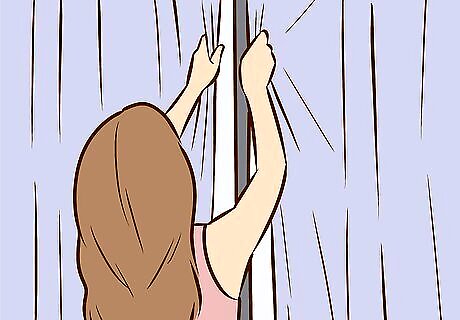
Close your blinds/curtains. About 30 percent of unwanted heat comes from windows. Close your window coverings to prevent direct sunlight from heating up the room. If you don’t already have blinds or curtains in the room, invest in some, especially if you have any south or west-facing windows. By using window coverings, you can reduce indoor temperatures by up to 20 degrees. Try to keep the window coverings closed from morning until late afternoon when the sun is at its peak. If heat is a persistent problem in the room, consider purchasing thermal insulated blackout curtains. Also, if you install curtains over an existing set of window coverings which were already there, don’t forget to close both.
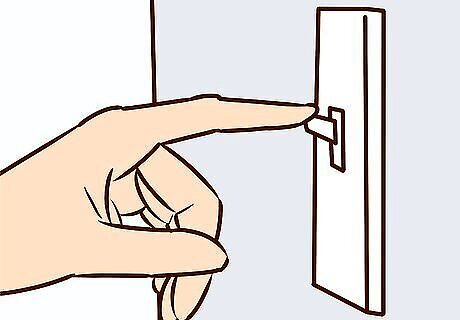
Turn off all unnecessary heat-producing devices, appliances, and lights. Any device that is powered on is currently contributing to the heat in the room. Unplug or turn off everything you’re not using. Computers and televisions, in particular, generate a lot of heat. Incandescent lightbulbs are big heat-generators, too. If possible, turn the lights off in the room. It's not always feasible to turn out all the lights. At the very least, dim them as much as you can. Consider replacing your incandescent lights with compact fluorescent lamps, or better yet, light-emitting diodes which generate far less heat. CFLs and LEDs are more environmentally-friendly, as well.

Pick up the clutter. Piles of clothing and other kinds of clutter absorb heat and keep it trapped in the room. The less clutter you have in the room, the more available space there is for the heat to disperse and the faster it will cool down. A lot of clutter can also restrict airflow, making it feel even hotter in the room. Toss any piles of clothing you have on the floor into your closet and shut the door behind them. Do a quick survey of the remaining clutter and quickly eliminate what you can.

Open a window and close off other rooms in the house. If it’s hotter inside the room than it is outside, the walls have probably absorbed a lot of heat from sunlight throughout the day. Remove this trapped heat and push it outdoors by opening the windows in the room. Close off any spaces in the house that you currently aren’t using, too. This will help to cool down the room you’re in more quickly. Once it cools off a bit, be sure to close the windows.
Circulating the Air
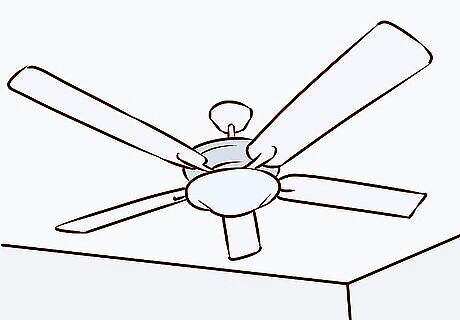
Turn on the ceiling fan(s) and adjust the settings. Ceiling fans are very effective because they move the air around the room and create a draft. They also pull air up when circulating it, and since hot air rises, this will help to cool the room down faster. If the ceiling fan isn’t already on in the room, turn it on immediately. If your ceiling fan has settings of low, medium and high, put the fan on the highest setting. Check the ceiling fan blades to see if they’re rotating counterclockwise (if viewing them from below) – if they aren’t, adjust the settings. Setting the blades to rotate counterclockwise and turning the fan on a higher speed will substantially increase airflow.

Turn on any other fans you have at your disposal. Table fans, box fans, oscillating fans and mounted fans will all help to contribute to air circulation in the room and create a wind-chill effect. A medium-sized oscillating fan placed on a desktop is very efficient at moving around stagnant hot air quickly. Keep multiple fans set up in the room during the summer so you can turn them on as soon as you walk in. Turn on your bathroom ventilation fan, too. The ventilation fan can help suck hot air out of the room, just as it does when you take a steamy shower.
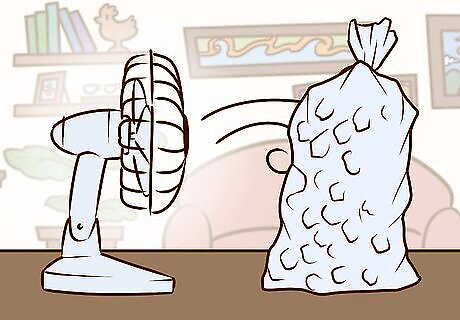
Place a tray of ice in front of one of the fans. Create a makeshift air conditioner by filling up a shallow pan, tray or mixing bowl with ice and positioning it in front of one of the fans. This will get cold, slightly misty air circulating the room very quickly. You could also use icepacks or, if you’re all out of ice, you can effectively improvise with something similarly cold, like a bag of frozen vegetables. Position the bowl at a slight angle, tilted up, if the fan doesn’t seem to be blowing across the ice effectively.
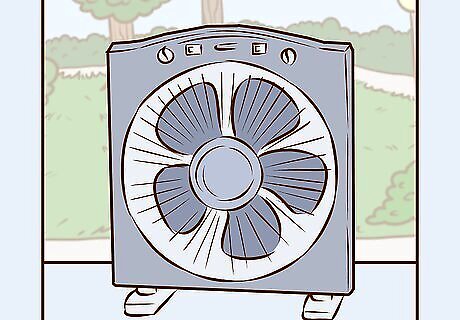
Position a box fan in an open window, facing out. The fan will pull hot air out of the room and transfer it outside. It will also bring in cooler air. Put the fan in the window that gets the most shade – this will provide the coolest intake air. Close any other windows nearby tightly. Open a few windows on the other side of your house. This will create a house-wide draft and cool things down quickly.
Controlling Heat
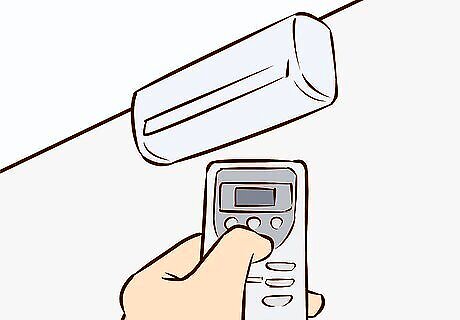
Install a window air conditioning unit or get a portable one. One of the best ways to quickly cool down a room is to install a window A/C unit. This will effectively cool down the room by working to condition the air in that space only. A central air conditioning system has to work to cool down the entire house, which takes a lot longer. Installing a window A/C unit is easy to do, especially if you have a sash window. If you don’t want to bother with installation or you have windows that aren’t ideal for it, consider buying a portable air conditioner. All you have to do is plug it in – no installation necessary.
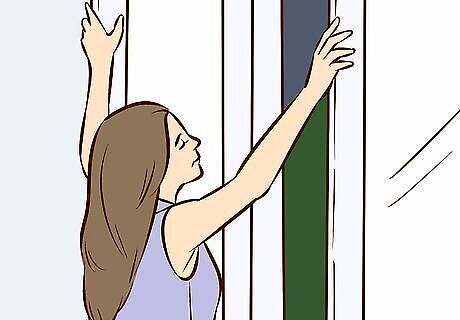
Open the windows at night. Temperatures typically drop at night, even in the summer. Take advantage of the cooler air by cracking a few windows at night before you go to sleep. You can capitalize on this cooler night air by setting up a fan or two across from a window to create a nice cross-breeze. Make sure you close the windows tightly in the morning to avoid letting hot air in. Close the blinds or curtains, too. Unplug all of the electronics in the room during the night, as well, to cool down the area even more.

Consider getting a dehumidifier if you live in a humid climate. Humidity can make the heat feel even more oppressive. If you live in a humid area, you might want to get a dehumidifier. These devices pull in the humid air of a room and circulate it around special coils before releasing it back into the room. You can pick up a dehumidifier at any home improvement store. Dehumidifiers aren’t cheap, but they are usually portable, so you can bring it from room to room to maximize its usage. For best results, place the dehumidifier in the center of the room you are trying to cool down.
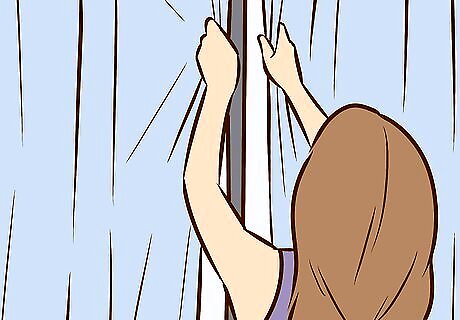
Manage your window coverings. If you are using window curtains or drapes, get medium-colored ones with white plastic backing to efficiently block heat. Be sure to hang them as close to the window as possible. Shades are also very effective at keeping heat out – be sure to mount these as close to the window glass as you can to create a sealed space to trap heat. Consider getting reversible shades that are white on one side and dark on the other side. In the summer you can position the white side facing out to reflect the sun and in the winter the dark side can be positioned to face out, which will absorb heat.



















Comments
0 comment